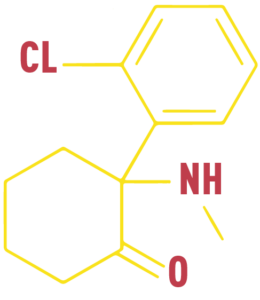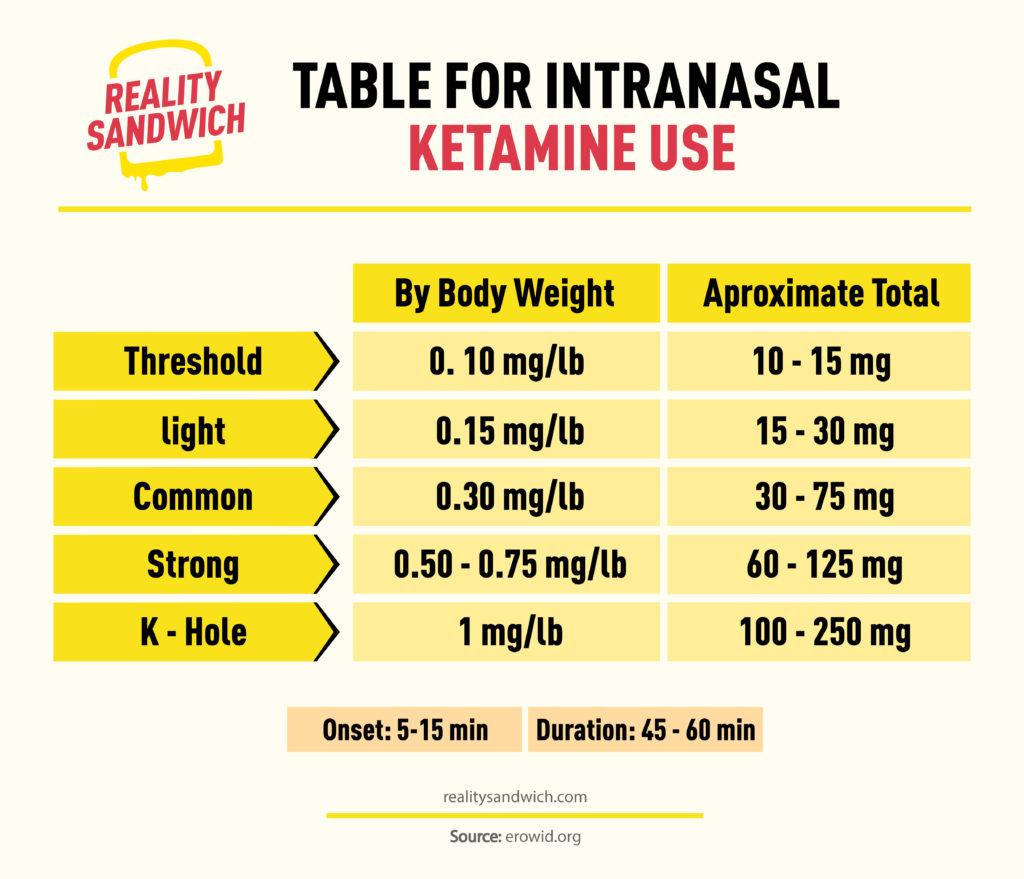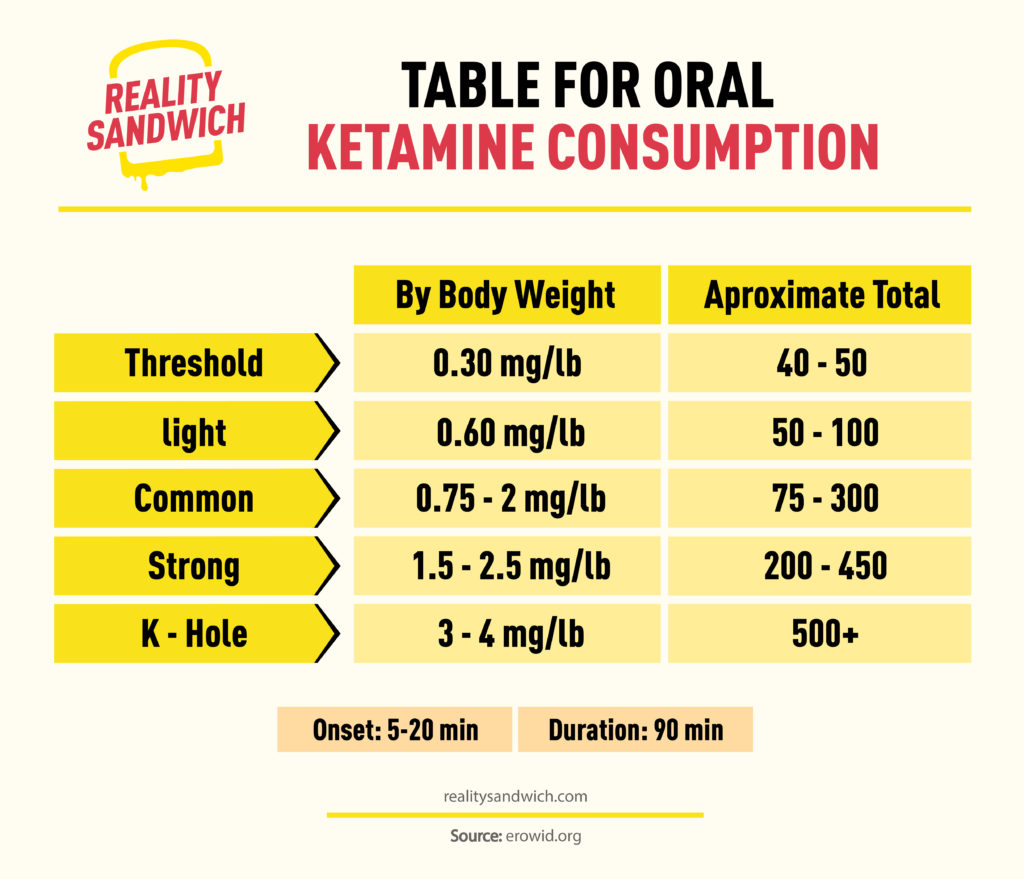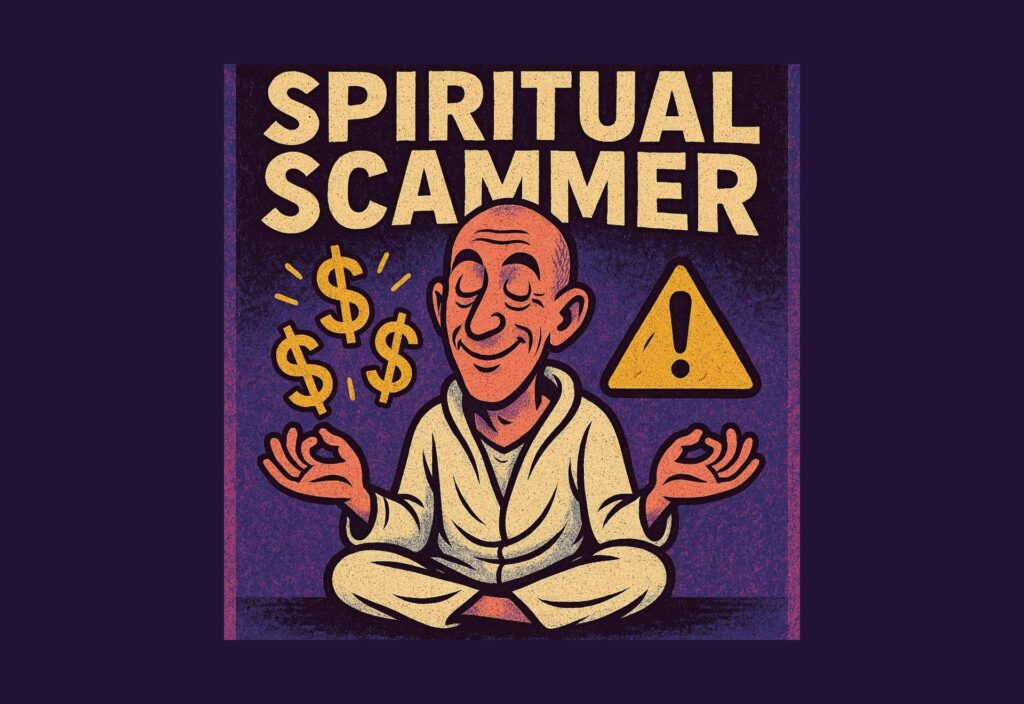Ketamine is a dissociative anesthetic with strong cognitive and psychedelic effects. Though popular as a recreational drug, Calvin Steven first developed ketamine while searching for an alternative to PCP, which produced undesirable effects. With its discovery in 1962, ketamine went through a series of preclinical trials before the FDA approved it in 1970. It became the surgical aesthetic administered to soldiers in Vietnam due to its relative levels of safety in comparison to other anesthetics.
Additionally, ketamine has been used on patients with respiratory and circulatory issues, and even made its way onto the World Health Organization’s List of Essential Medicines. Recently, the applications of ketamine treatment have extended to managing depression, even suicidal thoughts, because of it takes effect much quicker than other antidepressants and produces more long-lasting results.
What You Will Learn About Ketamine
- Ketamine is an NMDA receptor antagonist causing it to primarily act as a dissociative anesthetic.
- In March of 2019, the S(+) stereoisomer of ketamine called esketamine was approved by the FDA as a fast-acting antidepressant. It relieves the symptoms of depression within four hours of use and these effects can last for as long as several weeks.
- The effects of ketamine include inducing a trance-like state, pain relief, sedation, memory loss, euphoria, dissociation, auditory and visual hallucinations in high doses, agitation, confusion, elevated blood pressure, muscle tremors, and larynx spasms.
Overview
Ketamine changed the way scientists view depression due to how it works as a fast-acting antidepressant. A single low dose can produce antidepressant effects within four hours and for some patients those effects last for several weeks. Despite this, Ketamine has not been approved as an antidepressant. But the FDA approved a similar compound, esketamine, as a nasal spray in March of 2019. Ketamine’s other primary use is as an anesthetic in field conditions or as an induction agent prior to stronger anesthetics being used.
Ketamine is also becoming popular for recreational use due to its psychedelic and dissociative effects. When a user takes relatively large dose, it could produce a ‘K-hole’ effect that causes extreme dissociation, and visual and auditory hallucinations.
What is Ketamine
Ketamine is a NMDA receptor antagonist, a class of drugs that induce dissociative anesthesia. This is the same class of psychoactive substances as PCP (also known as angel dust).
The primary medicinal use for Ketamine is as an anesthetic due to its relative levels of safety in comparison to other anesthetics. Largely considered a safe anesthetic, it generally does not affect heart function, breathing, and airway reflexes. This makes it a safe and effective option for individuals with asthma or chronic obstructive airway diseases. It has also seen use for managing chronic pain particularly in individuals suffering from complex regional pain syndrome, although the evidence for this use is not strong. Currently, it is being studied for its potential use as a fast-acting antidepressant and possibly an effective way to reduce suicidal ideation.
Street Names
- K
- Special K
- Vitamin K
- Lady K
- Kitty
- Cristal Mesc
- Mean Green
Scientific Name

Ketamine Hydrochloride is a arylcyclohexylamine derivative that primarily acts as an NMDA antagonist and likely has other mechanisms of action too.
Ketamine has two stereoisomers, S(+) and R(-). Stereoisomers are compounds with the same molecular formula and sequence of bonded atoms, but different three-dimensional orientations. These two stereoisomers largely act in the same way, but have different levels of affinity for the NMDA receptor. The S(+) stereoisomer, called esketamine, shows to have two to three times the affinity, and has been approved for medicinal use as a nasal spray, under the name Spravato. According to a recent phase 3 clinical trial, esketamine appears to provide more relief to depression symptoms. Ketamine made for recreation purposes generally contains a mixture of both stereoisomers.
Forms and Ways of Consumption
Ketamine typically comes in:
- A crystalline powder form
- An injectable fluid
- A prescription medication nasal spray
*Ketamine comes as a liquid and is also made into a powder. In a legal, medicinal setting, liquid ketamine is used.
Recreational
Recreationally, the most common way to consume ketamine is intranasally. This way is often easier than creating a solution or pill and ingesting it. However, it is discouraged to take any substance intranasally due to the many adverse effects can cause due to impurities, such as physical damage of the nasal cavities and respiratory problems. This form of consumption causes effects to begin within 5-15 minutes and last for up to an hour. One can also ingest it, which causes effects to begin within 30 minutes, depending on when the user last ate, and lasts for up to two hours.
Medicinal
The most common use for ketamine is as an anesthesia. It is also used for managing chronic pain, treating depression, and sedation in intensive care. When used medicinally, ketamine is typically administered intravenously to ensure the entire dose is effective. Principium Psychiatry has taken a strong stance on intravenous administration of ketamine stating:
When we give ketamine intravenously, we know exactly where your entire dose is going: straight to your brain. The same cannot be said for other forms of ketamine. Intranasal ketamine has to bypass several layers of tissue before it can reach your brain, and too many things can happen that could cause you to lose some or most of your dose: sneezing, dripping, running down the back of your throat, etc. The same can be said for an oral pill and an intramuscular injection; these routes are just too unpredictable, and when it comes to treating your depression, we don’t want the results to be unpredictable.” (Estelle Autissier, RN – Principium Psychiatry
Clinics that specialize in using Ketamine for treating depression require strict controls on the effective dosage they are administering to their patients, so they use an intravenous method for administering the drug. However, it is strongly recommended to avoid using any substance intravenously unless under specialized supervision. Injecting any substance is dangerous.
History
Discovery
Ketamine was first discovered in 1962 by Calvin Stevens who was an adviser for the Parke-Davis company. After a legal dispute, Parke-Davis eventually gained full ownership over the Ketamine compound and its production. Initially tested on animals, it gave promising results during preclinical trials. After these trials, researchers tested it on human prisoners in 1964. These trials showed promising results due to its short duration and low behavioral toxicity. In 1970, the FDA approved it so that medics could quickly administer it to soldiers in the Vietnam War.
John C. Lilly
Dr. Craig Enright first introduced John C. Lilly, an American psychologist, to ketamine in an attempt to alleviate his chronic migraines. Dr. Craig Enright administered Dr. Lilly “special K” when his headache began. After few sequential doses, anecdotal reports state curing his headaches for good. This initial use of ketamine sparked a deep interest into the substance for Dr. Lilly.
He quickly realized he could achieve an altered state similar to that of LSD by increasing or decreasing his dosage through an IV drip. During these experiences he tried to map out the internal landscape that he experienced on ketamine. He called it the “hyperspace.” Within this “hyperspace,” he found beings with whom he felt could communicate telepathically, which he called the “Earth Coincidence Control Office” or ECCO. His use of ketamine started to spiral out of control resulting in multiple near death experiences. He believed that the ECCOs were protecting him during these near death experiences, so instead of stopping his usage, he increased it. At the height of his usage, he was injecting himself with ketamine nearly once an hour.
Important Events, Findings, Studies
During the later part of the 1960s, medics in the Vietnam War used the drug as an anesthetic. Handling patients while they were under the effects of ketamine was much easier. Additionally, ketamine did not produce the same negative effects as the previous opiates used. During the 1970s, the U.S. approved Ketamine for anesthetic use for the general population.
During the early parts of the 1970s, medics in the Vietnam War used the drug extensively as a surgical anesthetic directly following FDA approval in 1970. Ketamine proved to be a relatively safe form of anesthesia for emergency surgery in field conditions because it generally has no effect on heart function, breathing, and airway reflexes. This made it largely preferred over phencyclidine, or PCP, which was also associated with behavioral toxicity.
The U.S. formally classified ketamine as a Schedule III substance in 1999 after continuous growth in recreational use since the late 1970s. Its popularity rapidly grew as it became known as a cheap alternative to MDMA.
Laws and Legal Status
Ketamine is currently illegal to possess, distribute, and manufacture in most countries.
- In the United States, it has been illegal to possess K without a prescription since 1999, since classification to a Schedule III controlled substance.
- Ketamine is a Schedule I substance, placing it in the same class as heroin, and carries a maximum sentence of 7 years in Canada.
- In the UK, Ketamine is a Schedule B substance, which makes it legal in a medicinal context. In December of 2019 s-ketamine nasal spray has been licensed for use for treatment-resistant depression when administered by a doctor or nurse. Ketamine clinics have grown in popularity as a treatment option for those who need it.
Pharmacology
Mechanism of Action
Ketamine primarily functions as an NMDA receptor antagonist. The NMDA receptors are in the brain. Ketamine binds directly to the dizocilpine site of the receptor preventing glutamate and glycine from binding. This inhibits electrical signaling between neurons in the brain and the spinal column. Ketamine may also act on the opioid, dopamine, serotonin, muscarinic acetylcholine, nicotinic acetylcholine, and estrogen receptors. These mechanisms of action are still not fully understood. The antagonist effects, when applied in small quantities, increase the movement of information in the brain through the affected neural networks. Increasing the dose can produce anesthetic effects because of the receptors full blockage. This recreational dosage is referred to as the “K-Hole”.
Toxicity
Before we can discuss whether or not ketamine is toxic, we first need to define what makes a substance toxic. Toxicity is defined based on the levels of exposure required for a substance to cause harm to a human or animal. The level of toxicity is measured based on the dose required to cause harm to a human. Even water can be toxic in too high of a dose and lethal snake venom can be non-toxic in a small enough dose. LD50 is a common measurement of toxicity, which measures the lethal dose for half of the tested organisms.
A chemical is considered toxic when it damages cells and tissues. One of the biggest concerns with psychedelics is they may be neurotoxic. When a substance is neurotoxic, it specifically damages neurons, which are the cells that make up our central and peripheral nervous systems.
Ketamine Toxicity
Studies have shown that repeated high doses of ketamine can be toxic in several ways, with pronounced toxicity to brain cells noted during prolonged exposure exceeding 24 hours. Issues can also happen within the urinary tract, such as white cysts, blood, and loss of bladder control. These cases are increasing each year, especially due to the drug’s rise popularity coinciding with a lack of knowledge regarding the substance. This phenomena is beginning to attract the attention of several large media outlets.
Interactions
Mixing alcohol with Ketamine is especially dangerous because they are both largely metabolized by the liver. Stimulants can also cause dangerous interactions due to the additive effects on blood pressure. Also, it is wise to avoid opioids when using ketamine as they will enhance the sedative effects of each other.
Many other substances can enhance the effects of Ketamine, thus increasing the chance of feeling overwhelmed, or experiencing a K-Hole. This effect is particularly strong with any CYP3A4 inhibitors, such as diazepam, and CYP2B6 inhibitors, such as orphenadrine, due to the way they increase plasma concentrations of ketamine caused by inhibition of its metabolites.
For a more thorough list of interactions, consult the image below by Tripsit:

Safety
Although taking K in a controlled medical setting has an extremely low potential for addiction. Many addiction clinics claim to be treating a large amount of patients with ketamine dependence. We still don’t have a conclusive study on how ketamine addiction works, but we do have some idea on the mechanisms standing behind it.
Common Side Effects
When consumed in small quantities, ketamine produces euphoric effects. Higher doses create hallucinogenic effects. As the dose increases, its dissociative effects become more apparent, eventually reaching the K-Hole. Normal ketamine after effects can last up to 8 hours, with antidepressant effects lasting up to a week. Dosage amounts are highly dependent upon the body weight of the individual who is consuming it.
A psychedelic’s effects will have large variances, depending on the individual. A variety of factors contribute to what one will experience. For example, set and setting. Timothy Leary conducted a study with 175 individuals to whom he administered psilocybin in a setting similar to a common living room. In the larger groups of eight people or more the individuals felt less support from the group overall and had less pleasant experiences than those placed in smaller groups of six people or less. This is just one example but demonstrates how that can impact the experience and effects of a psychedelic experience. While everyone’s experience with ketamine will differ and the effects will shift throughout the experience, most users experience these common side effects:
- Induces a trance-like state
- Pain relief
- Sedation
- Memory loss
- Euphoria
- Dissociation
- Auditory and visual hallucinations in high doses
- Agitation
- Confusion
- Elevated blood pressure
- Muscle tremors
- Larynx spasms


FAQ
How long does ketamine stay in your system?
Metabolites of ketamine can remain in urine for up to four days.
How long does ketamine last?
The effects of ketamine last for up to an hour when used intranasally and up to two hours when ingested.
What is ketamine used for?
The most common use for ketamine is a dissociative anesthetic, and to relieve chronic pain and symptoms of depression, and recreationally.
What does ketamine do?
Ketamine primarily acts as an NMDA receptor antagonist. It binds directly to the dizocilpine site of the receptor preventing glutamate and glycine from binding which inhibits electrical signaling between neurons in the brain and the spinal column.
What does ketamine feel like?
Ketamine induces a trance-like state alongside euphoria, pain relief, and visual and auditory hallucinations in large doses.
What does ketamine look like?
Ketamine Hydrochloride is a white crystal typically crushed into a powder.
How much does ketamine cost?
In the developing world, ketamine generally costs between $0.84 and $3.22 per vial.
Does ketamine degrade?
Yes, Ketamine can degrade in presence of light and heat.
What does K taste like?
Ketamine has a taste similar to most any other alkaloid — bitter and typically unpleasant.
Can I get a prescription for ketamine?
Depending where you live, you can obtain a prescription for ketamine from your doctor.
Disclaimer: Ketamine is potentially categorized as an illegal drug. Reality Sandwich is not encouraging the use of this drug where it is prohibited. However, we believe that providing information is imperative for the safety of those who choose to explore this substance. This guide is intended to give educational content and should in no way be viewed as medical recommendations.
If you have relevant information or updates concerning the research and studies of psychedelic substances, please reach out to info@realitysandwich.com We appreciate your contribution. –RS















